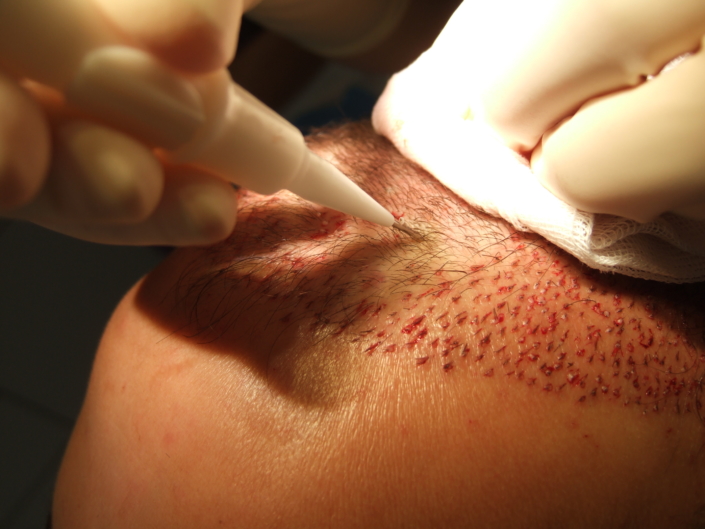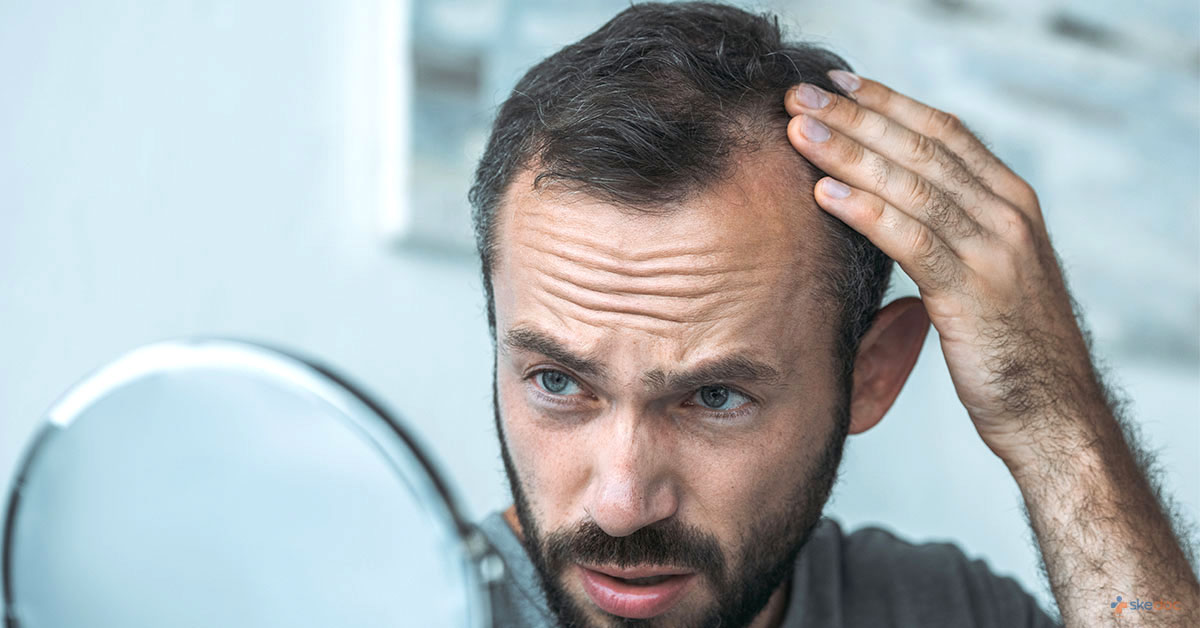Although hair micrografts have always been related to men, in recent years it has become the most demanded solution to a problem that also affects thousands of women. We explain the different types of alopecia, as it is necessary to identify the causes to treat it properly.
Types of alopecia
Androgenetic alopecia (AGA) is the most common type of alopecia. It is produced by genetic factors that can affect both women and men. It has its origin in hormonal disorders, which increase the levels of androgens, and male hormones. Androgens cause hair follicles to progressively miniaturize, turning into thin and weak hair.

Androgenetic alopecia manifests itself differently in men and women. In men, hair loss begins on the front, forming the famous recesses, or on the crown. In women, diffuse hair loss occurs in the upper area of the head, advancing from the central part of the head towards the sides. On rare occasions, it reaches total baldness.
There are other forms of alopecia, such as primary scarring – fibrosing frontal alopecia- and secondary – due to radiotherapy or burns-. In autoimmune alopecia, it is our own body that destroys the hair follicle, forming clearly defined areas without hair. Another type of alopecia is telogenic effluvium, which usually occurs seasonally or after periods of stress. The specialist doctor must make an adequate differential diagnosis since some of these types of baldness do not require a capillary micrograft or may even be contraindicated.

Capillary micrografts
The treatment of capillary micrografts consists of transplanting hair follicles from the occipital area of the head so that they grow with the same characteristics in the recipient area (frontal or parietal). For the hair graft in men and women, the FUSS and FUE techniques are used. They are minimally invasive techniques, with minimal postoperative discomfort and that allow us to obtain natural and definitive aesthetic results.
FUSS technique

The strip technique is a minimally invasive surgical procedure, performed under local anesthesia, which can cover large areas with natural and definitive results. FUSS (Follicular Unit Strip Surgery), is a technique that consists of extracting a strip of scalp between 0.8 and 1.8 cm wide, by 15 to 25 cm long from the occipital area. In this area, the hair is genetically prepared so that it never stops growing. The follicular units of this strip are implanted in the receptor, frontal or parietal area, and the incision in the nape is sutured. The scar is practically imperceptible and is completely hidden by the hair. This technique is indicated in advanced degrees of alopecia, in which the donor area is limited since it allows greater extraction of follicular units.
FUE technique

This technique consists of the extraction of follicular units – from 1 to 4 hairs – from the occipital donor area and implanting them in the recipient area. It is performed using a variable diameter punch, which can range from 0.7mm to 1mm, depending on the thickness of the patient’s hair and its characteristics. This technique is indicated in patients who require a minimum touch-up or want to cover a small scar.
Hair micrografts in eyebrows
This treatment has special considerations since the extraction of hair to implant is carried out from an area with a growth of greater length than that of the eyebrows. However, the hair transplanted in that area undergoes a process of metaplasia and will end up growing normally.

The eyebrow micrograft is different in men and women. In women, it is necessary to take into account the direction of the hair on the eyebrows to achieve a natural and optimal result. Therefore, in women, the FUSS technique (the strip technique) is recommended with long hair, since it will allow seeing the direction of implantation of the follicles. In men, the eyebrows are more populated, which is why both the FUE and FUSS techniques are usually performed.
Hair transplant in beard and mustache

Micrografts in the beard and mustache are performed in patients who, congenitally, have a distribution of facial hair with low density, or with alopecic areas. Beard alopecia is highly variable, so a personalized assessment is required.
The capillary micrograft must be adapted to the needs of each patient, to achieve the most natural appearance possible.




GIPHY App Key not set. Please check settings